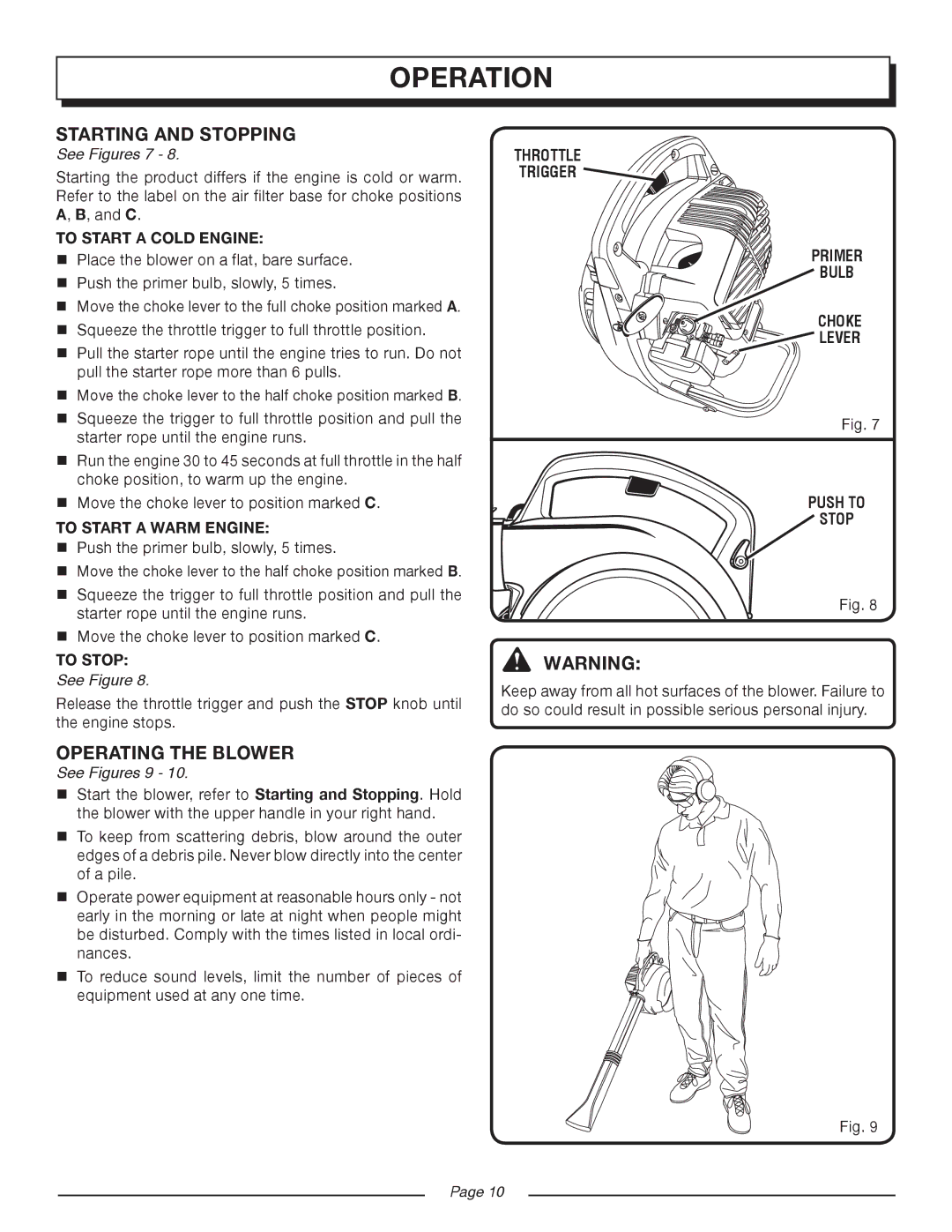
OPERATION
STARTING AND STOPPING
See Figures 7 - 8.
Starting the product differs if the engine is cold or warm. Refer to the label on the air filter base for choke positions A, B, and C.
TO START A COLD ENGINE:
nPlace the blower on a flat, bare surface.
nPush the primer bulb, slowly, 5 times.
nMove the choke lever to the full choke position marked A.
nSqueeze the throttle trigger to full throttle position.
nPull the starter rope until the engine tries to run. Do not pull the starter rope more than 6 pulls.
nMove the choke lever to the half choke position marked B.
nSqueeze the trigger to full throttle position and pull the starter rope until the engine runs.
nRun the engine 30 to 45 seconds at full throttle in the half choke position, to warm up the engine.
nMove the choke lever to position marked C.
TO START A WARM ENGINE:
nPush the primer bulb, slowly, 5 times.
nMove the choke lever to the half choke position marked B.
nSqueeze the trigger to full throttle position and pull the starter rope until the engine runs.
nMove the choke lever to position marked C.
TO STOP:
See Figure 8.
Release the throttle trigger and push the STOP knob until the engine stops.
OPERATING THE BLOWER
See Figures 9 - 10.
nStart the blower, refer to Starting and Stopping. Hold the blower with the upper handle in your right hand.
nTo keep from scattering debris, blow around the outer edges of a debris pile. Never blow directly into the center of a pile.
nOperate power equipment at reasonable hours only - not early in the morning or late at night when people might be disturbed. Comply with the times listed in local ordi- nances.
nTo reduce sound levels, limit the number of pieces of equipment used at any one time.
THROTTLE
TRIGGER 

PRIMER
BULB
CHOKE
 LEVER
LEVER
Fig. 7
PUSH TO
 STOP
STOP
Fig. 8
WARNING:
Keep away from all hot surfaces of the blower. Failure to do so could result in possible serious personal injury.
Fig. 9
Page 10
